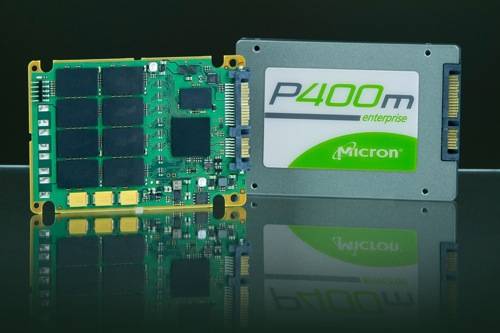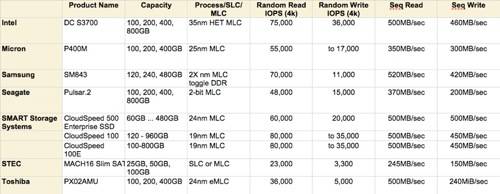This article is more than 1 year old
WHOMP! Micron drops middle ground server and storage SSD
Outstanding? Well, er...
Micron has launched the P400M solid state drive targeted at the data centre server and storage array market. With a 7PB written endurance level, it's not an outstanding drive performance-wise, but let's have a look at its overall features.
The P400M is a follow-on to the 2011 vintage P400E, an entry-level enterprise SSD described by Micron as a boot and log SATA drive aimed at cloud and Web 2.0 applications. Like the P400E the "M" uses 25nm MLC NAND and has a 6Gbit/s SATA interface. It comes in 100GB, 200GB and 400GB capacity points and has updated firmware and can endure 10 full drive writes a day for five years.
This endurance number is for the 400GB model and is the equivalent, Micron burbles contentedly, of writing every picture posted to Facebook daily for 311 days straight, about 78 billion photos total1 based on 250 million 90KB photos posted each day.
Here's how the speeds of the "E" and "M" models compare:
- The P400E does up to 50,000 random read IOPS, the M up to 55,000.
- The E does up 7,000 random write IOPs, while the M does up to 17,000 - a big improvement.
- The E reaches 350MB/sec in sequential reading, the same as the newer M.
- The E does up to 140MB/sec sequentially writing, but the M is much better, achieving up to 300MB/sec.

We can categorise the M simply as a performance- and endurance-enhanced E. The M's endurance is down to firmware that Micron brands as XPERT, standing for eXtended Performance and Enhanced Reliability Technology and it better manages the drives flash resources to extend its life and provide consistent performance. There's a PDF describing it here.
Here is a table comparing the performance numbers for mainstream data centre server and storage array SSDs - and it seems that Micron is joining august company. All the numbers are "up to" numbers by the way and assume they apply to the largest capacity model listed.

A selection of SATA interface data centre MLC SSDs. Click on picture for a larger version that won't hurt your eyes.
What can we glean from the table? First of all, Micron is in the mid-range random read and write IOPS area. It has optimised the product more for reading than writing but that's to be expected. Its sequential read and write performance is below the mid-point for this set of drives. We're left considering the P400M as no performance champion and a product that will earn its spurs from reliability, performance consistency and endurance.
The endurance is okay, with a sample of numbers from the other drives looking like this:
- Intel DC S3700 - 10 full drive writes/day for 5 years; same as P400M.
- Micron P400M - 7PB written or 10 full drive writes/day for 5 years with 400GB model.
- Samsung SM843 - 1.064PB written.
- Seagate Pulsar.2 - 15PB written with 800GB model, 2X P400M capacity.
- SMART CloudSpeed 500 - 3 full drive writes/day for 5 years.
- SMART CloudSpeed 100 - 3PB written.
- SMART CloudSpeed 100E (extended) 7.7PB witten.
- Toshiba PX02AMU - 2PB written.
Micron's new drive is on the same high level as other long-lived drives. It's not outstanding but it's up there.
Is all this solid but not outstanding performance and longevity enough? It won't be if other suppliers match Micron's performance consistency, data integrity and endurance, yet have faster out-and-out performance.
Many data centre SSDs use the SAS interface and Micron, we expect, will introduce a SAS version of the P400 later this year. ®
